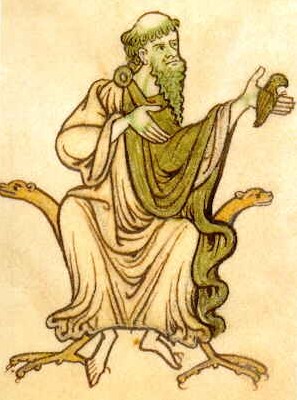“A little meditation.” That’s how Nobel Prize winning poet Seamus Heaney described his poem, St. Kevin and the Blackbird.
The story of St. Kevin, like most legends, is an outlandish tale. As Kevin is deep in meditation, he holds his upturned palm so still that a blackbird lands in it, nests, and lays her eggs there. The saint then chooses to stay motionless, as if a tree, until the fledglings have been safely hatched and left the nest. For the record, it takes two weeks for blackbird eggs to hatch.
Heaney was not troubled by the fact that “the whole thing’s imagined anyhow” and instead took it as an opportunity to explore the landscape of compassion. “Imagine being Kevin,” he gently instructed, so I did.
I don’t know if it was Heaney’s intention or not, but as I envisioned St. Kevin’s tender care for such a small creature and her brood, I thought less about fantastical, heroic measures, and more about the countless little things we each do to bring comfort, care, or support to one another, things that require only small effort, not great sacrifice, but that can make a huge difference to someone else.
We might lose sight of the value of such acts precisely because they are not epic gestures. Instead, they come in the form of chance good deeds from strangers, mundane chores we do to make daily life more comfortable for those around us, small favors, a note of sympathy at the right moment, or even a simple pause to express appreciation to someone. The list goes on and on.

I realize it might seem quite an unrealistic leap to go from the hero’s tale to everyday kindnesses, as my mind did, but it was Heaney that took me there. “Doing the right thing for the reward of doing the right thing,” he said, is “a labor of love.”
While “hero” moments make great stories, they don’t come often, nor to everyone. The little moments, on the other hand, are available to us all, every day.
And that’s why I carry this particular Seamus Heaney poem close to heart.
Heaney’s narration is taken from a 2009 reading hosted by Faber and Faber, his longtime publisher in London, on the occasion of his 70th birthday.
To honor the spirit of the poem as a meditation, I’ve coupled Heaney’s voice with a piano improvisation to accent and lift the sentiment of his words and paired it with video of the stream that runs through Glendalough where the real St. Kevin made his home centuries ago. The stream sounds at the end of the video were recorded there, as well.
I had no idea or intention of this project when I visited Glendalough in April of 2014. If I’d had the forethought, I’d have filmed far more of the stream there than I did. I wrestled a bit with how to make the small scrap of footage I’d captured there work for the entirety of the poem because I felt strongly that the water and home place of the real St. Kevin had to be the visual backdrop.
In the end, the footage I got, of the place where the sound of the water against the rocks was the most pleasing to my ear, seemed altogether fitting to me as an image that might help draw the listener into imagining the story as Heaney tells it. After all, it’s the words and the voice that matter most to a story.
This video appears with the kind permission of Lucy Mathews Heegaard. Piano was graciously provided by Barbara McAfee. barbaramcafee.com “St. Kevin and the Blackbird” from OPENED GROUND: SELECTED POEMS 1966-1996 by Seamus Heaney. Copyright © 1998 by Seamus Heaney. Used by permission of Farrar, Straus and Giroux, LLC in the United States and by permission of Faber and Faber, worldwide excluding the U.S. For more visit here. To hear the unedited audio of Heaney’s reading, see the original video here. To read the text of the poem click here. Videography, sound editing and production by Lucy Mathews Heegaard at studio-lu.net. Original article available here.




Comments about this page
It’s very common in india for a sadhu,or saint to perform austerity by standing on one leg an holding ones arm upright, fasting ect.why imagination? that’s what he was doing tyoe of yoga his mind was fixed on God that is more difficult then keeping the body still.
Add a comment about this page